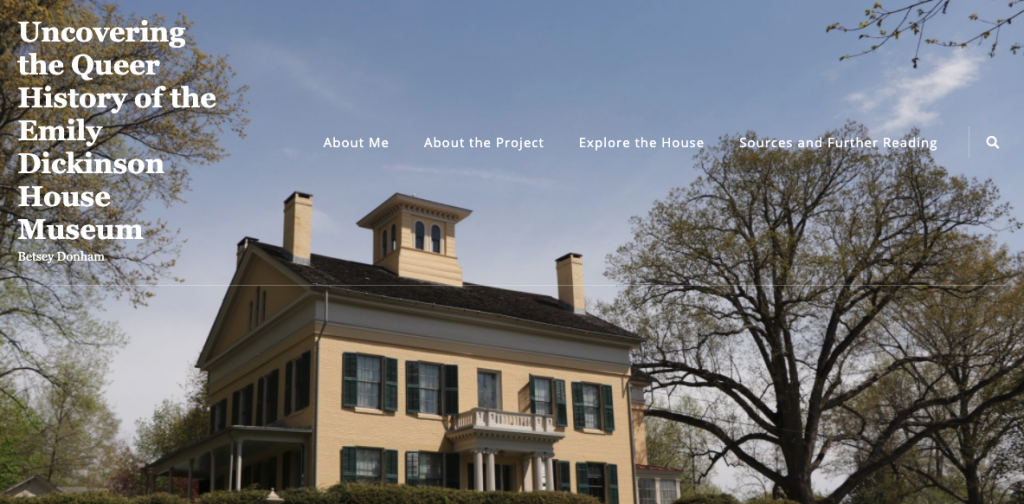Visit “Uncovering the Queer History of the Emily Dickinson House Museum” by Betsey Donham ’21
Famed author Emily Dickinson and her sister-in-law Susan Dickinson had a correspondence and romantic relationship for over three decades; from 1850 until Emily’s death 1886, the two sent each other hundreds of love letters and poems. Emily sent her letters from the Homestead, her family home in Amherst, MA, to Susan’s home at the Evergreens, immediately next to the Homestead. The decades of romantic correspondence from Emily to Susan are transcribed in the book “Open Me Carefully: Emily Dickinson’s Intimate Letters to Susan Huntington Dickinson,” edited by Ellen Louise Hart and Martha Nell Smith. While Susan’s letters to Emily don’t survive, it is clear that the two were deeply in love.
However, the Emily Dickinson House Museum website describes this relationship only as a close friendship in two scant sentences. This erasure of their love is partially due to a literal erasure by Mabel Loomis Todd, an early editor of Emily’s work who literally scratched out and removed Sue’s name from Emily’s love letters and poems. The erasure is also due to the larger erasure of queer histories: the mainstream historical record consistently overlooks, doubts, or intentionally ignores LGBTQ+ histories.
My goal for this project is to reframe the history of the Emily Dickinson House Museum through Emily and Susan’s relationship in order to uncover the queer history that exists there. I do so by taking a passage about a certain history from the museum’s website, and rewriting or writing an additional passage that looks at that history through their relationship. By taking an element from the house and placing it into the context of Emily and Susan’s relationship, viewers are able to see how Emily saw her own life and her own house: through Susan.
I use quotes from Emily’s letters and poems that directly relate to that aspect of history, in order to ensure that her words are at the center of her own history. While I contextualize the quotes, Emily Dickinson is ultimately telling her own queer history. It’s integral for queer histories like hers to be told, so that LGBTQ+ people can see ourselves in history. We can read Emily’s love letters to Susan and know that our lives and love stories have always existed.
